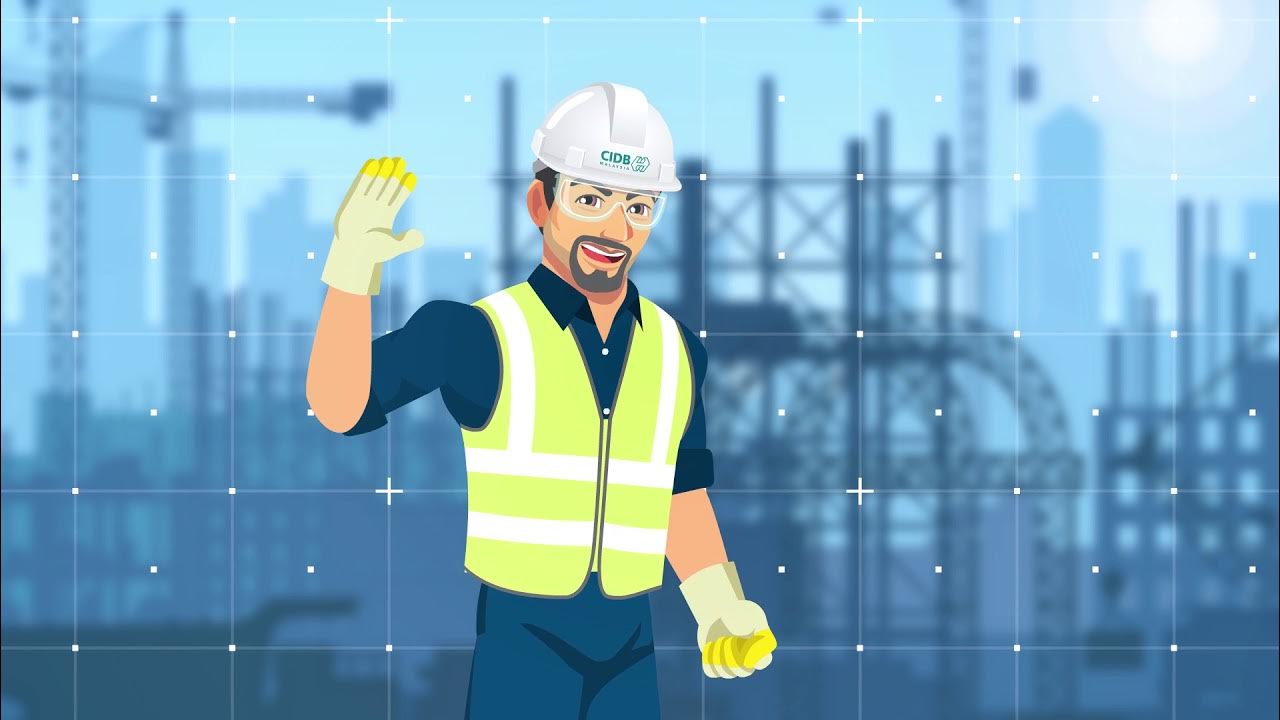Managing occupational health and safety
Summary
TLDRThis script emphasizes the importance of occupational health and safety in construction sites, outlining the responsibility of the principal contractor to prevent accidents and diseases. It highlights the necessity of a prevention program, continuous improvement, and the 'identify, correct, control' process to manage hazards. The script also stresses the need for worker involvement, effective corrective measures, and ongoing training to ensure a safe work environment and increased productivity.
Takeaways
- 🚧 The construction site is fraught with numerous risks and hazards, including the work environment, equipment, materials, tasks, workers, schedules, and company management.
- 👷♂️ As a principal contractor or employer, it's your legal and moral responsibility to ensure the prevention of work accidents and occupational diseases.
- 🛠️ Managing occupational health and safety involves implementing a prevention program tailored to your specific construction trade.
- 📋 Each prevention program consists of action sheets that identify risks and detail preventive measures and control methods for each risk.
- 🔄 Continuous improvement is key in managing occupational health and safety; hazards should be identified, corrected, and controlled regularly.
- 🕒 Hazard identification should occur during the planning stage, not just before starting work, to avoid unexpected delays.
- 🔍 To identify hazards, analyze all aspects of the work, including tasks, equipment, materials, work environment, and workers.
- 🗣️ Consult your accident register and listen to workers' input to identify workplace hazards effectively.
- 🛑 Prioritize hazards that pose serious and immediate risks to workers, such as those with zero tolerance, then address the most frequent hazards.
- 🔧 Corrective measures can include material or equipment substitution, engineering controls, awareness raising, administrative controls, or providing personal protective equipment.
- 🔄 It's often necessary to combine multiple solutions for effective hazard correction.
- ⏰ Establish a timeframe and designate a person responsible for implementing each corrective measure.
- 🔒 After hazards are corrected, implement controls to ensure the solutions are effective and sustained, including worker training and monitoring systems.
- 🏗️ Prevention programs are crucial for planning a safe job site, but remember to adapt them to the unique conditions and evolving hazards of your specific construction project.
- 👥 Assisted prevention is a collective effort involving everyone's responsibility and is an ongoing process.
Q & A
What are the potential sources of danger on a construction site?
-The work environment, equipment, materials, tasks and workers, schedules, hours, and company management are all potential sources of danger.
Why is it important for a principal contractor or employer to prevent work accidents and occupational diseases?
-It's important not only because it's the law, but also because these accidents can significantly impact productivity and affect workers and their families.
What does managing occupational health and safety involve?
-It involves implementing a prevention program and an action plan adapted to the specific construction trade, which includes a set of action sheets identifying risks and preventive measures.
What is the purpose of a prevention program?
-A prevention program serves as a starting point for managing occupational health and safety, aiming for continuous improvement by identifying, correcting, and controlling all workplace hazards.
Why is it crucial to identify hazards during the planning stage of a construction project?
-Identifying hazards during the planning stage helps avoid unwelcome surprises that could prevent the job from getting underway, ensuring a smoother and safer project start.
What are two good tips for identifying hazards on a construction site?
-Consulting the register of accidents, incidents, and first aid, and listening to what workers have to say are two effective tips for identifying hazards.
How should corrective measures be prioritized when addressing workplace hazards?
-Start with hazards that have serious and immediate consequences, then address the most frequent hazards, and finally, correct all other hazards.
What are some ways to correct workplace hazards?
-Corrective measures can include substituting materials or equipment, implementing engineering controls, increasing awareness, introducing administrative controls, or providing personal protective equipment.
Why is it important to establish a time frame and designate a person in charge before implementing corrective measures?
-This ensures that the chosen solutions are effectively and sustainably implemented, as understanding and enforcement by workers are crucial for success.
What steps should be taken after correcting hazards to ensure ongoing safety?
-After hazards are corrected, it's important to put controls in place to ensure the chosen solutions are effective and sustainable, including informing and training workers and establishing a monitoring system.
How can the prevention programs provided by the APC HQ assist in planning a safe job site?
-The prevention programs offer indispensable guidance for planning a safe and secure job site, but it's important to remember that every job site is unique and hazards can evolve, necessitating the continuous identify-correct-control process.
What are the potential consequences of poor management of occupational health and safety?
-Poor management can lead to work stoppages, notices of correction, or even statements of offense from the CNA, highlighting the importance of effective safety management.
Outlines

Cette section est réservée aux utilisateurs payants. Améliorez votre compte pour accéder à cette section.
Améliorer maintenantMindmap

Cette section est réservée aux utilisateurs payants. Améliorez votre compte pour accéder à cette section.
Améliorer maintenantKeywords

Cette section est réservée aux utilisateurs payants. Améliorez votre compte pour accéder à cette section.
Améliorer maintenantHighlights

Cette section est réservée aux utilisateurs payants. Améliorez votre compte pour accéder à cette section.
Améliorer maintenantTranscripts

Cette section est réservée aux utilisateurs payants. Améliorez votre compte pour accéder à cette section.
Améliorer maintenantVoir Plus de Vidéos Connexes
5.0 / 5 (0 votes)






